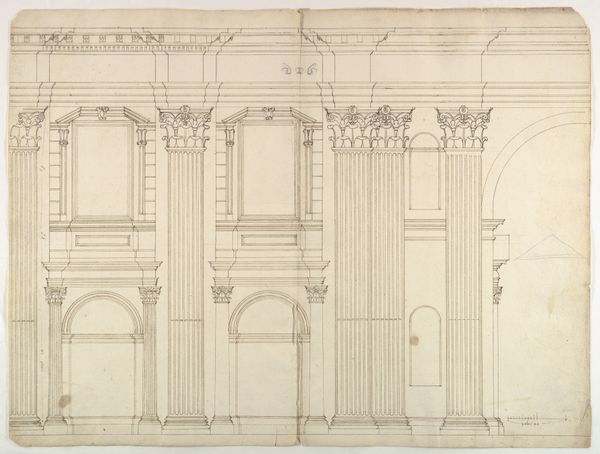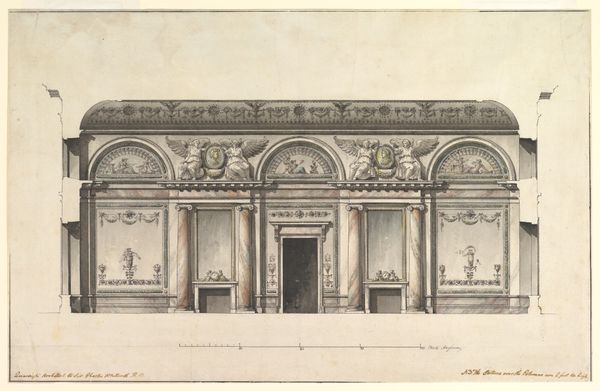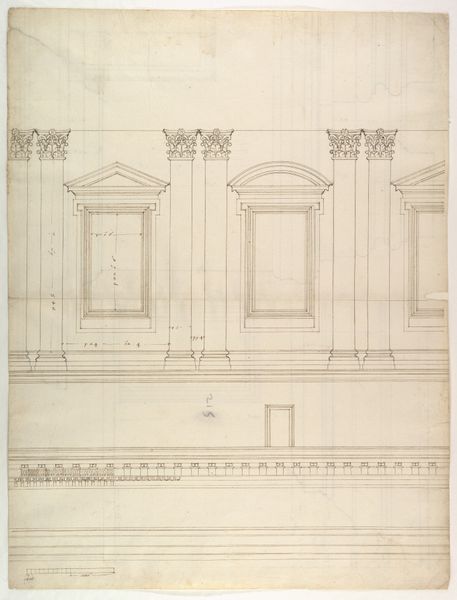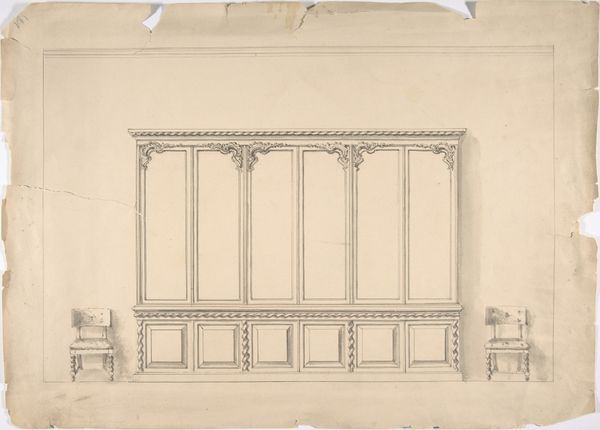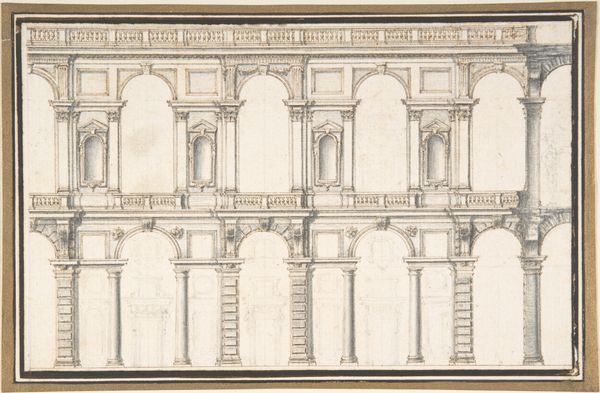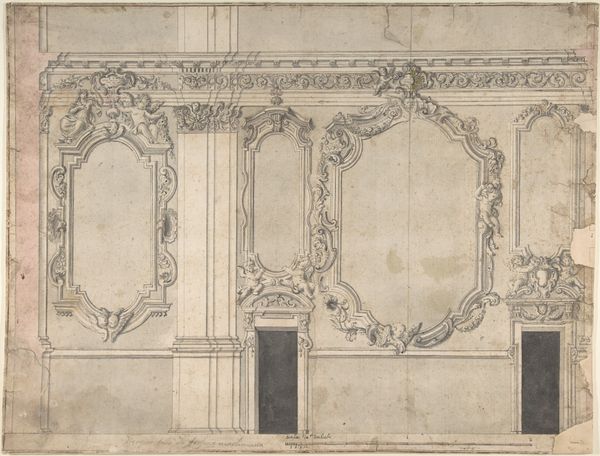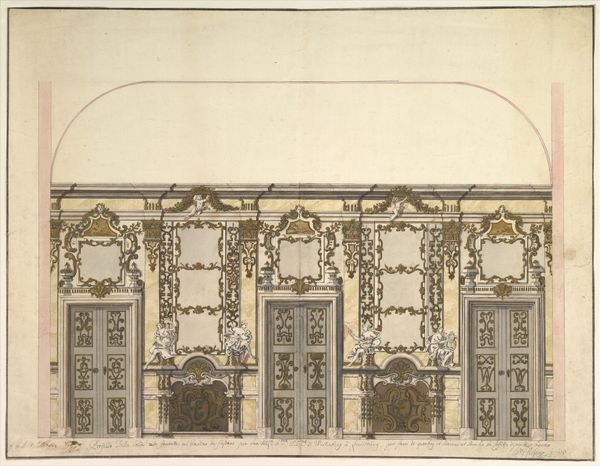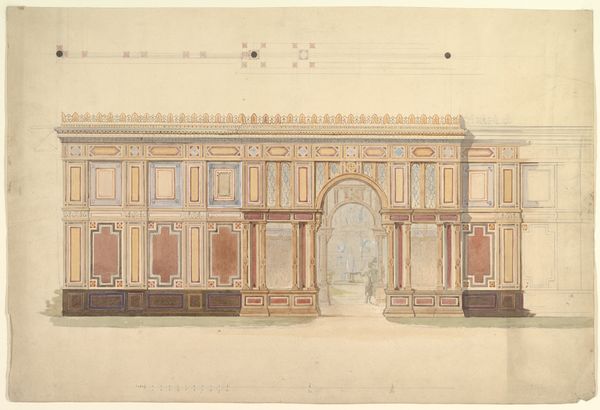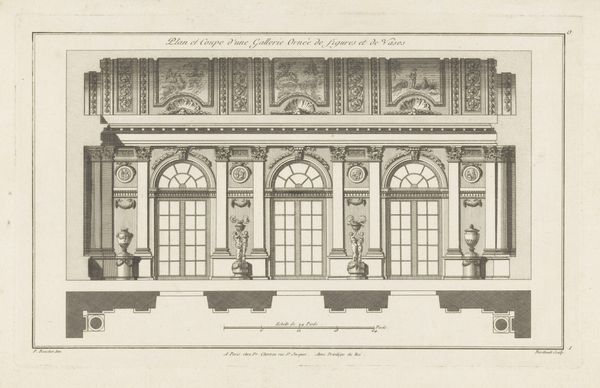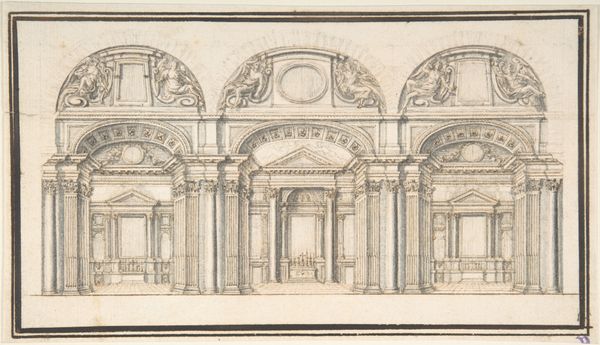
Longitudinal Section of Great Throne Room (Saint George's Hall), Winter Palace, Saint Petersburg 1771 - 1776
0:00
0:00
drawing, print, architecture
#
drawing
#
neoclacissism
# print
#
architecture
Dimensions: sheet: 14 5/16 x 34 11/16 in. (36.4 x 88.1 cm) image: 14 x 34 3/8 in. (35.6 x 87.3 cm)
Copyright: Public Domain
Editor: This is Giacomo Quarenghi’s "Longitudinal Section of Great Throne Room (Saint George's Hall), Winter Palace, Saint Petersburg," made between 1771 and 1776. It’s a drawing, a print, really an architectural rendering. I'm struck by its rigid symmetry; it feels very imposing. What kind of statement was Quarenghi trying to make with this design? Curator: The Winter Palace, and Saint George's Hall in particular, are loaded with political and social meaning. Neoclassicism, the movement to which Quarenghi adhered, became the architectural language of power and reason across Europe at this time. Look at the way the repeated columns and rhythmic placement of the windows create a sense of order. Editor: So, the architecture itself becomes a tool for projecting authority. Curator: Precisely. It was about visually reinforcing the perceived stability and legitimacy of the Russian Empire, especially under Catherine the Great. Think about who would have used this space—ceremonial events, receiving dignitaries... Every detail was carefully planned to inspire awe and respect. Does that symmetry still strike you as simply aesthetic, or something more? Editor: It feels much more intentional now. Like the room itself is designed to control the narrative and put everyone in their place. Curator: And what about the artistic choices involved in the drawing? Remember this was destined for public consumption through prints. The clean lines, the precise detailing... They reinforce the rationality associated with enlightened rule. In essence, this architectural rendering becomes a tool of propaganda. Editor: Wow, I never considered the print as propaganda, but it totally makes sense when you frame it in that historical context. It really does change how I view it. Curator: That's the power of understanding the history of art in the broader cultural context; it opens our eyes to the politics embedded in even the most seemingly objective representations.
Comments
No comments
Be the first to comment and join the conversation on the ultimate creative platform.
